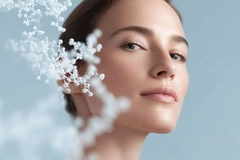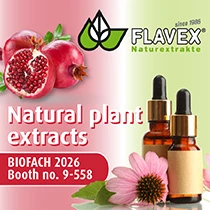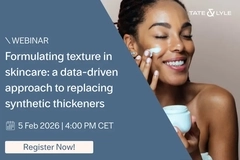The art of skin care: Painting restoration techniques applied to cosmetics

Shiseido’s collaboration with the Greenart consortium, transforming solutions for art restoration into skin care, will end in September this year. The partnership is using the same technique to create eco-friendly and non-toxic cosmetic solutions, saying that the physical science behind the two is the same.
The Japanese cosmetic manufacturer has been formulating green materials and technology, turning “cultural heritage into cosmetics.” EU-funded researchers facilitate the project.
Dr. Taku Ogura, a senior researcher at Shiseido and visiting associate professor at the Tokyo University of Science in Japan, says: “Greenart technology benefits the cosmetic industry. Microemulsion technology is used to clean delicate artwork, but it also works for cleansing human skin.”
Ogura explains that Shiseido has already incorporated the techniques into existing skin care products, such as sustainable cleansing foam and makeup removal. The products are expected to enter the market when the project ends in September.
The Greenart project aims to preserve cultural heritage with sustainable solutions. It restores cultural artefacts, including paintings, sculptures, and textiles.
“Shiseido is a partner of this project because the technology, chemistry, and physics developed can be transferred into cosmetics,” said Piero Bagloni, a representative of Greenart, earlier this year.
“Cosmetics are very similar to cleaning paintings. When you want to clean your skin, the physics and chemistry are the same.”
 Bagloni says technology holds the power to extend beyond art into cosmetics, medicine, and agriculture.Cleaning skin like a canvas
Bagloni says technology holds the power to extend beyond art into cosmetics, medicine, and agriculture.Cleaning skin like a canvas
The research team from Greenart has been exploring applications with Shiseido for skin care products over a three-year period and has found techniques for cleaner and greener cosmetics preparations.
Shiseido and Greenart showcased their innovations so far earlier this year at Expo 2025 in Osaka, Japan. Visitors could gain hands-on experience with gels for cleaning artwork and using the same gel to clean the skin.
“A gel can be formed through liquid, and in certain conditions, this liquid contains macromolecules — molecules bigger than single solvent molecules. They can aggregate with each other and form long chains. This long chain interacts with each other and then moves from a liquid phase to a solid, light phase,” detailed Bagloni at the expo.
Bagloni said that the gel may then load or release materials, and is used for cleaning some of the most important paintings in the world.
“Cosmetics is a field where we can transfer the knowledge we have acquired in this project.”
He adds that technology holds the power to extend beyond art and cosmetics and into medicine and agriculture.
“Participating in the World Expo is very important to us,” said Baglioni. “We want to show that technologies developed for art can have much broader applications.”
 Shiseido has introduced beauty tech innovations for multiple cosmetic applications. Shiseido’s beauty tech
Shiseido has introduced beauty tech innovations for multiple cosmetic applications. Shiseido’s beauty tech
Last month, Shiseido introduced its skin technology for natural moisture retention, delivering ingredients to the skin’s outermost layer, the stratum corneum. The technology delivers and retains skin care ingredients deep into the skin, as the skin’s natural moisturizing factors cannot penetrate the skin efficiently enough.
In April, the skin care company announced the development of mineral sunscreen technology, which boosts UV protection while delivering a transparent finish. According to internal tests, the formulation provided up to 2.2 times more UV protection than similar products on the market developed without the technology.
In February, Shiseido developed technology to boost its skin-brightening ingredient, 4MSK. The technology allows the ingredient to penetrate the skin deeply, reducing dark spots, freckles, and pigmentation. It claimed that in comparison to older formulations, the new technology allows twice as much 4MSK to enter the skin.













